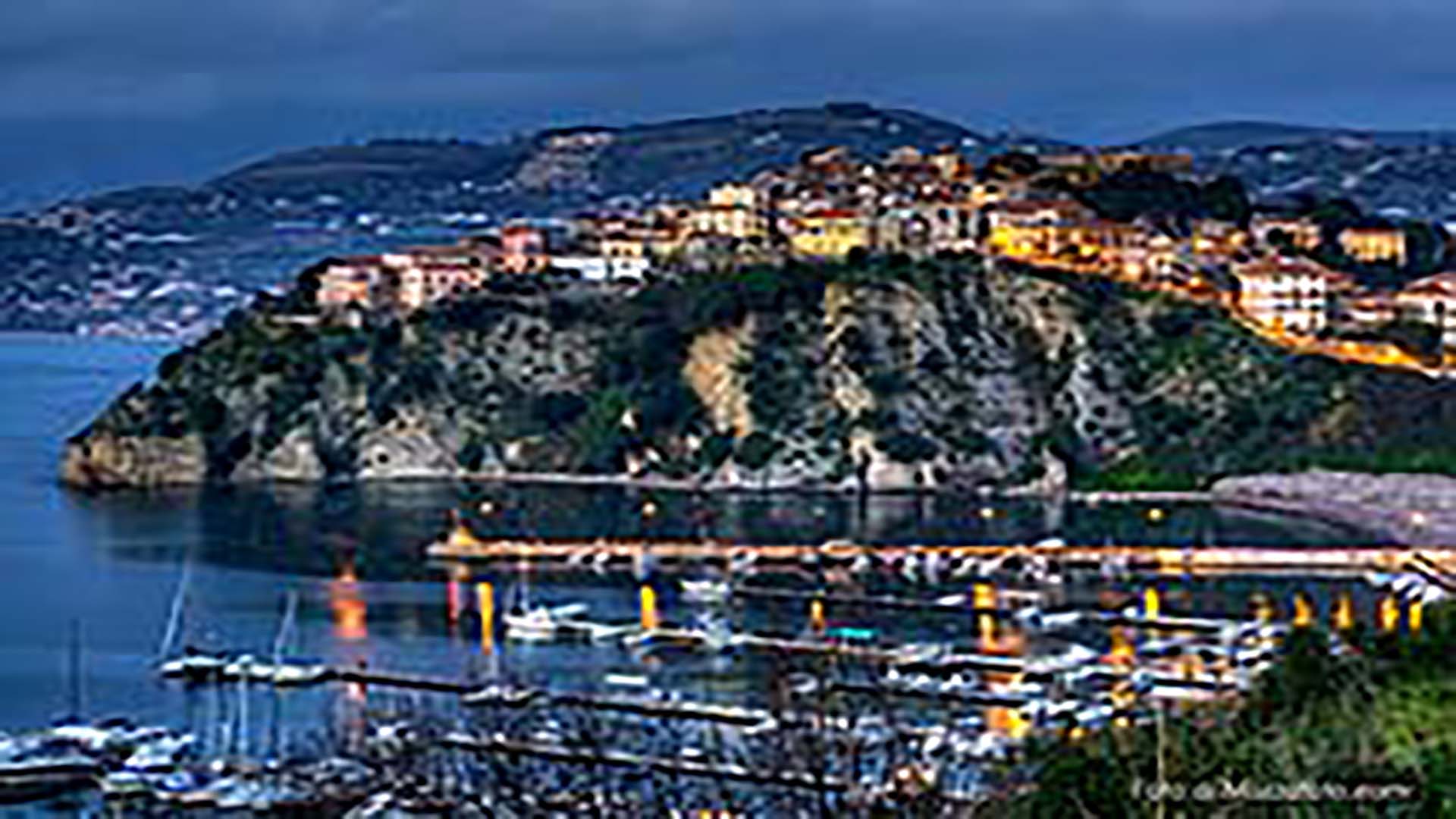Agropoli is a coastal agricultural center some 53km from Salerno in the zone of Cilento.
Its name derives from the Greek for ‘high city’, although it seems to have been founded by the Byzantines. In 882 AD it was occupied by the Saracens.
Like Sorrento the main town overlooks the sea and is perched on high cliffs.
A great place to keep a look out, as the Byzantine castle suggests, although it didn’t stop the Saracens eventual conquest.
Entrance to old Agropoli is via a medieval gate which no doubt saw the invaders pour through. Once inside turn right and follow the street up towards the castle and the panoramic views of the sea.
Although a private house now occupies the living area the grounds and walls can be visited.
A monthly magazine called ‘Casa Parco’ is produced by the Parco Nazionale del Cilento & Vallo di Diano. In the Oct 1998 edition the magazine featured a letter written by Arthur John Strutt, an English writer from Chelmsford who was traveling in the area in 1838.
This is what he wrote about Agropoli to his family while staying over in Castellabate on the 14th May:
‘After following this road for 6 miles we proceeded along a path which wound its way up a hill. Once on the summit the path descended towards the sea and, after a further walk of 5 or 6 miles, to a village called Agropoli which sits magnificently on a rock overlooking the bay of Salerno. We carried on along the mule track as it hugged the coast towards Castellabate where we choose to rest’.
The city of Agropoli, sits just south of Paestum, and is approximately 35 minutes driving from Salerno. The old part of the town, what most tourists come to see, spills on to an indented promotory jutting out into the sea, which commands a fine view over the sea of the Cilento.
The name of the town itself “Agropoli” alludes to what many believe are its fouding fathers – the Greek, but many scholars now believe that in fact, this city has Byzantine origins and was in reality founded no earlier than the 5th century A.D.
In the 9th century, the Saracens, the famous Mediterranean pirates, who were famous for terrorizing coastal towns along Italy’s Tyrrhenian sea, conquered Agropoli and made it their stronghold for over two centuries. As a result, the infamous group, who were known throughout the meditteranean, came to be known as the “Agropolitan Saracens.” A field, within the town, has preserved its denomination of “Saracen field” to this very day.
Today Agropoli is a mostly modern, by comparision to some of the nearby sites, like Paestum. However, there are many historical marks throughout the town, such as the medieval castle with its ajoining borough and the city gate dating from Aragonese
History: The promontory on which Agropoli stands has been inhabited since Neolithic times. To the east of the promontory, at the mouth of the River Testene, there is a natural sheltered bay, called “Foce”, which the Greeks used for trading with the local people. In Roman times, in the area now known as San Marco, a seaside town called “Ercula” developed between the 1st century BC, and the 5th century AD. Meanwhile, the harbour of neighbouring Greek Poseidonia (renamed Paestum by the Romans) became progressively silted up. During the 5th century AD, when the Vandals from Africa made life difficult in Ercula, its inhabitants retreated to the overlooking promontory, which offered better prospects for defence. There the Byzantines fortified the settlement, and called it Akropolis, meaning “high town”. Towards the end of the 6th century, the Longobard invasion forced the Bishop of Paestum to take refuge in Agropoli, which then became not only the episcopal see, but the main centre of the surviving Byzantine territories in Tyrrhenian Lucania.
In 882 the town fell to the Saracens, who turned it into a powerful stronghold. From this base, they set out to plunder the surrounding areas, right up to the walls of Salerno. In 915, they were driven out from their trenched camp at Garigliano, Agropoli was also liberated, and came back under the jurisdiction of the bishops.
For the rest of the medieval period, the area remained under the protection of the bishops, who also possessed huge territories around until the early 15th century. In 1412, Pope Gregory XII ceded the feudal territories of Agropoli and Castellabate to King Ladislaw of Durazzo. In 1436, King Alphonse of Aragon granted the fiefdoms of Agropoli and Castellabate to Giovanni Sanseverino Baron of Cilento. In 1445 the Numerazione dei Fuochi recorded total 202 families. From 1552 Agropoli passed to various families in succession: D’Ayerbo of Aragon (1553); Grimaldi (after 1564); Arcella Caracciolo (1597); Mendoza (1607); the Filomarino princes of Roccadaspide (1626); Mastrillo (1650); Zattara, and finally the Sanfelice, Dukes of Laureana (1660), who ruled the town until the abolition of feudalism in 1806.
During the 19th century, Agropoli began to expand outside the medieval walls, but the old town has remained intact, together with most of the surrounding defensive walls, and the 7th-century entrance gate.

